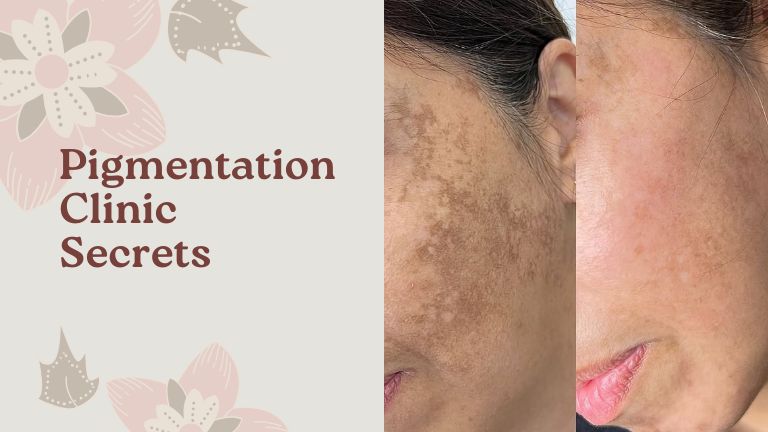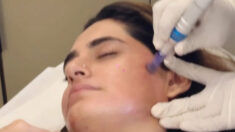
Pigmentation refers to your skin color, which is determined by a pigment called melanin. When melanin is produced unevenly in your skin, some areas appear darker than the surrounding skin. Many of you may be concerned about spots that suddenly or gradually appear on your face, forehead, above your lips, or hands. This introduction aims to explain what pigmentation is and why it occurs, so that further treatment steps are clear.
Factors such as sunlight, hormonal changes, skin inflammation, and aging affect melanin production. Identifying the exact cause determines the direction of treatment. When you meet with a specialist, they will first examine your skin and then provide a personalized treatment plan.
For those looking for lasting improvement, professional treatments at the best pigmentation clinic Singapore can make all the difference. These clinics specialize in diagnosing and treating different types of pigmentation using medical-grade procedures, advanced technology, and expert care. The goal is not just to lighten dark spots but to achieve a natural, radiant, and even skin tone that enhances your overall complexion.
Types of Pigmentation Conditions
There are various pigmentation conditions, and each can have distinct causes, appearances, and treatments. Understanding your condition can help you tailor a treatment plan.
Melasma causes brown or dull gray patches to appear on the face. You may notice this more often during pregnancy or while taking hormonal medications. Freckles are small brown spots that become more visible from sun exposure. Lentigines, or sunspots, develop over time due to sun exposure and appear on the face and hands. Post-inflammatory hyperpigmentation is a condition where dark marks form on the skin after acne, injury, or burns. Testing is necessary for each type of condition because the treatment strategy may vary.
What Makes a Pigmentation Clinic Different?
When you compare in-home treatments with clinics, you’ll notice a clear difference. In clinics, doctors and technicians work together to deliver long-lasting and safe results. Treatments are tailored to your needs and skin type.
Professional Diagnosis
Before any treatment, your skin type, pigmentation depth, and history are carefully considered. Experts use digital imaging and skin analysis to determine whether the problem is superficial or deep. Understanding the underlying cause increases the likelihood of receiving the right treatment.
Advanced Technology
Laser and light-based technologies used in clinics target melanin and cause minimal damage to the surrounding skin. The modern devices you hear about actually deliver controlled energy that breaks down pigments and allows skin to rejuvenate.
Personalized Care
Every individual’s skin is different, so treatment plans are also unique. Doctors recommend medications, sessions, and topical products based on your daily routine, skin sensitivity, and lifestyle. Results will be better when you follow your doctor’s instructions.
Holistic Approach
Clinics focus not only on removing blemishes but also on overall skin health. Hydration, nutrition, sun protection, and skin revitalization are also included in the treatment suite. This approach helps maintain long-term improvements.
Common Treatments for Pigmentation
The choice of treatment that best suits you will depend on the type and severity of pigmentation. Below are some common and effective options available in-clinic.
Laser Pigmentation Removal
Laser treatment delivers focused light energy that breaks down melanin into tiny fragments. Your body gradually removes these broken particles through its immune system.
Common laser options include
Pico lasers deliver very short energy pulses and can affect both superficial and deep layers. Q-switched lasers are useful for freckles, sunspots, and age spots. Fractional lasers also work on pigmentation, improving skin texture and fine lines by stimulating collagen production. After these sessions, your skin typically appears brighter and smoother.
Chemical Peels
Chemical peels use special acids that remove the top layer of skin, exposing new skin. Dark spots on your skin are lightened, and the tone is improved. This procedure is often performed in series so that the gradual changes are permanent.
Topical Treatments
Doctors sometimes prescribe medical-grade creams containing ingredients like hydroquinone, kojic acid, or retinoids. These topical products help reduce melanin production and improve skin tone. Use them only as directed by your doctor, as improper use can increase sensitivity.
Medical-Grade Facials
In-clinic medical facials include delicate exfoliation and hydrolysis therapy. These sessions support the treatments and maintain skin health. Results last longer when your skin is regularly nourished.
Combination Therapy
Often, a single treatment isn’t enough. Your doctor may recommend a combination of laser sessions, chemical peels, and topical therapy. Using a combination can help you see rapid improvements in both skin tone and texture.
The Benefits of Professional Pigmentation Treatment
Professional treatments offer numerous benefits, including restoring more than just beauty and self-confidence. Doctors tailor treatments to your skin, minimizing risks. Clinical approaches can precisely target both superficial and deep pigmentation. As you boost collagen production through treatment, your skin’s texture and radiance also improve. Most importantly, with proper care and maintenance, the benefits can be long-lasting and have a positive impact on your self-image.
Maintaining Results After Treatment
The steps you take after treatment will determine the durability of the results. Daily sun protection is essential, so apply sunscreen of at least SPF 30 in the morning and reapply as needed throughout the day. Using a gentle cleanser and non-irritating moisturizer will help repair the skin. Keeping your skin well hydrated maintains its barrier function. A healthy diet, adequate sleep, and stress management also contribute to skin health. Regular follow-up clinic visits allow your doctor to assess your progress and make necessary adjustments.
Achieving Confidence Through Clear Skin
Treating pigmentation not only enhances the skin’s superficial beauty but also transforms your self-confidence. You feel more comfortable in social situations when you are free from the anxiety caused by blemishes. Seeking professional help ensures more secure and lasting results. By following treatment recommendations with patience and dedication, you can gradually achieve even, glowing skin that reflects your true self.
Commonly Asked Questions
Patients often ask how many sessions are needed. The answer is that the number of sessions depends on the type and severity of pigmentation, but generally, improvement is seen within three to six sessions.
- Questions arise about safety, and the answer is that when performed by a qualified specialist using the correct settings, the treatment is safe for all skin types.
- Pigmentation can reappear, so continued sun protection and maintenance are essential.
- Side effects are generally mild, such as temporary redness or slight sensitivity that resolves within a few days.
- Most treatments have minimal downtime, and normal activities can be resumed quickly.
Next Steps
The first step when you’re concerned about uneven skin tone should be to consult a specialist. The specialist will thoroughly diagnose your problem and create a personalized treatment plan. Approach treatment with patience and regular care. By maintaining careful sun protection and a healthy lifestyle, you can enjoy smooth, healthy skin for a long time.
With this information, you can make informed decisions about your skin and choose the right path for optimal results.


